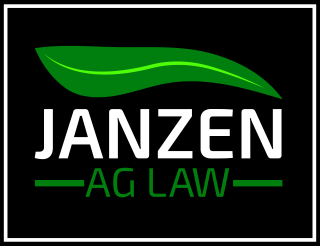How Will Indiana's Isolated Wetlands Act Impact Agriculture?
/Indiana Governor Eric Holcomb signed the controversial isolated wetlands bill into law on April 29, 2021. What, if anything, does that mean for agriculture?
Senate Bill 389 originally would have repealed all state regulations for any isolated wetland. In its amended form, it is more nuanced. First, it is important to note that this state legislation does not change federal wetlands regulations, such as rules enforced by the Army Corps of Engineers or the Environmental Protection Agency (EPA). Instead, the Indiana legislation only addresses "isolated” wetlands, meaning a wetland not subject to the Clean Water Act. The 2020 Navigable Waters Protection Act (NWPR) restricted federal jurisdiction over waters, and requires a wetland to be adjacent to a non-wetland jurisdictional waters before federal jurisdiction over the wetland is triggered. This shifted more of the regulatory burden onto the states. Indiana responded by enacting Senate Bill 389 in its amended form.
Indiana has three classes of wetlands. Class I already has been heavily disturbed by humans or supports only minimal wildlife. Class III isolated wetlands are minimally disturbed by humans or are on a specific list of ecologically important types. Class II includes wetlands that are neither Class I nor Class III. The new Senate Enrolled Act 389 allows development in Class I isolated wetlands without a permit. It also allows wetland development activity in Class II wetlands under 3/8 acre in size (or 3/4 acre in a municipality) and in ephemeral streams.
SEA 389 provides that a permit is not needed for the development of cropland that has been used for agricultural purposes: (A) in the last 5 years; or (B) in the past 10 years if the Army Corps has issued a jurisdictional determination confirming the cropland does not contain federally regulated wetlands. The new legislation also amends the law so that maintenance of a field tile in a Class II wetland can be conducted with a general permit if certain conditions are met, and maintenance of a field tile in a Class III wetland can be conducted with a general permit if certain conditions are met and the applicant obtains a site-specific approval. Finally, the Act gives the Indiana Department of Environmental Management (IDEM) 90 days instead of 120 days to make a decision on a wetlands permit and creates a wetlands task force. The legislation includes an unusual retroactivity clause, making it effective back to January 1, 2021 (instead of the typical July 1 effective date).
According to the Indy Star, Class I wetlands account for 58% of the state's remaining wetlands and Class II wetlands make up 41%. SEA 389 was controversial for numerous interest groups across the state. Now that Governor Holcomb has signed the bill into law, we can expect new forms, guidance documents, and policies from IDEM. I anticipate litigation over the new wetlands law, too.
For now, the take away for landowners and farmers is that an individual permit won’t be required for development of a Class I isolated wetland or for small Class II isolated wetlands. This should reduce costs. Farmers will be able to maintain field tiles without worrying about running afoul of state wetlands regulation. The task force will study the state wetlands issue and is required to issue its report and recommendations by November 2022.





